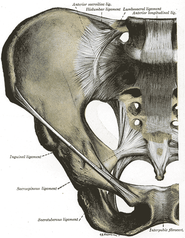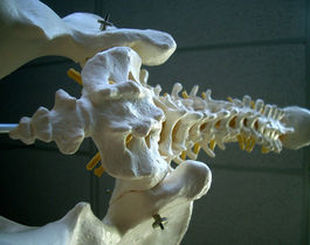- Home
- About Us
- TSPT Academy
- Online Courses
-
Resources
- Newsletter
- Business Minded Sports Physio Podcast
- Day in the Life of a Sports PT
- Residency Corner
-
Special Tests
>
-
Cervical Spine
>
- Alar Ligament Test
- Bakody's Sign
- Cervical Distraction Test
- Cervical Rotation Lateral Flexion Test
- Craniocervical Flexion Test (CCFT)
- Deep Neck Flexor Endurance Test
- Posterior-Anterior Segmental Mobility
- Segmental Mobility
- Sharp-Purser Test
- Spurling's Maneuver
- Transverse Ligament Test
- ULNT - Median
- ULNT - Radial
- ULNT - Ulnar
- Vertebral Artery Test
- Thoracic Spine >
-
Lumbar Spine/Sacroiliac Joint
>
- Active Sit-Up Test
- Alternate Gillet Test
- Crossed Straight Leg Raise Test
- Extensor Endurance Test
- FABER Test
- Fortin's Sign
- Gaenslen Test
- Gillet Test
- Gower's Sign
- Lumbar Quadrant Test
- POSH Test
- Posteroanterior Mobility
- Prone Knee Bend Test
- Prone Instability Test
- Resisted Abduction Test
- Sacral Clearing Test
- Seated Forward Flexion Test
- SIJ Compression/Distraction Test
- Slump Test
- Sphinx Test
- Spine Rotators & Multifidus Test
- Squish Test
- Standing Forward Flexion Test
- Straight Leg Raise Test
- Supine to Long Sit Test
-
Shoulder
>
- Active Compression Test
- Anterior Apprehension
- Biceps Load Test II
- Drop Arm Sign
- External Rotation Lag Sign
- Hawkins-Kennedy Impingement Sign
- Horizontal Adduction Test
- Internal Rotation Lag Sign
- Jobe Test
- Ludington's Test
- Neer Test
- Painful Arc Sign
- Pronated Load Test
- Resisted Supination External Rotation Test
- Speed's Test
- Posterior Apprehension
- Sulcus Sign
- Thoracic Outlet Tests >
- Yergason's Test
- Elbow >
- Wrist/Hand >
- Hip >
- Knee >
- Foot/Ankle >
-
Cervical Spine
>
- I want Financial Freedom
- I want Professional Growth
- I want Clinical Mastery
 Orthopaedic medicine and therapy are traditionally rooted in the biomechanical model. If a patient has pain in their knees and they show signs of osteoarthritis, it is deemed the cause. If a patient has pain in their leg and an MRI reveals a herniated disc or bone spurs pressing on nerves, the cause is assigned again. Repetitive motion is assumed to lead to degeneration and eventually pathology. I, like many others, grasped onto these concepts and this specialty because it appears logical. With the development of pain science research, we have learned that imaging findings are not necessarily associated with pain. This means just because a patient with L sided arm pain presents with L sided stenosis in the cervical spine, we can't automatically assign a diagnosis and treat based off the pathology. Degeneration is normal aging and should not dictate treatment or expectations. This can be frustrating as many patients we see will have already seen other PT's or doctors who explained something in a biomechanical sense. It is our job to liberate our patients from their preconceived poor prognosis. That being said, we shouldn't be so quick to completely throw away various aspects of the model. As I've written about previously, I utilize the Selective Functional Movement Assessment (SFMA) in my assessments. The purpose of the examination is to identify painful and limited joints and to especially notice any asymmetries. The SFMA is built on certain landmarks for completion of a motion with less regard for quality of motion. The system is still based on a biomechanical theory, however, where the accumulation of mobility and stability from various joints results in a combined motion. The motion can often be limited by degenerative changes over time but also can be affected by neurological input/output, which contributes to the pain science theory. Because of this and the research that says we cannot be specific in our segmental joint assessment or manipulation, I took an interest to repeated motions as a treatment and assessment. They do not require much specification with diagnosis and are far easier to utilize. Based originally off McKenzie method, repeated motions has a theory built more off sensitivity of the nervous system. Injury often occurs due to a heightened nervous system and must be treated by repeatedly loading it to alter the threshold. While I have found significant success using a repeated motions approach, I haven't abandoned the manual skills from my residency and fellowship. Many of the studies that conclude inability to assess segmental restrictions include physical therapists of different skill types. The manual skills and sensitivity of a new grade compared to an experienced clinician are vastly different. The same applies to a general therapist and a FAAOMPT-credentialed therapist. I have had patients who found limited results with repeated loading and by assessing and treating any segmental restrictions the patient had greater success. Why might that be? Potentially we are focusing on treatment to the more affected region and thus improving the stimulus to alter the neural threshold. In no way am I discrediting the repeated motions approach. I think the two should regularly be utilized together and can compliment one another. Manual therapy can accelerate outcomes and repeated motions can build the patient's independence and retain the gains. It is for this reason that I encourage regular practice of one's manual skills to continue to improve sensitivity with assessment. -Chris Have you ever wanted to enroll in a residency but not have the time or ability to financially commit? Jim Heafner, PT, DPT, OCS, SFMA and Chris Fox, PT, DPT, OCS, SFMA from The Student Physical Therapist have partnered with Dana Tew, PT, DPT, OCS, FAAOMPT from Optim Physical Therapy to create a COMT program starting in October! The mission of the program is to develop the clinical reasoning and manual skills of the participants over the course of a year through a structure similar to a residency, but without the financial sacrifice and significant time commitment, The program will help you to prepare for the OCS, improve your outcomes, and qualify for Fellowship enrollment. Check out the program for more details at www.optimfellowship.com and let us know if you have any questions!
0 Comments
Leave a Reply. |
Dr. Brian Schwabe's NEW Book in partner with PaleoHacks!
Learn residency-level content on our
Insider Access pages We value quality PT education & CEU's. Click the MedBridge logo below for TSPT savings!Archives
July 2019
Categories
All
|








 RSS Feed
RSS Feed